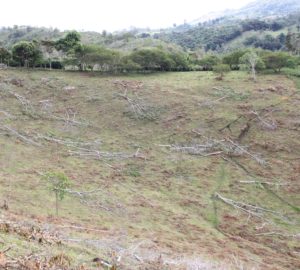Home espresso makers have a long history of finding clever workarounds to problems keeping their drink prep from where they want it to be. One such method that has gained popularity in recent years has been a fun little spritz of water on your coffee beans before grinding. The added moisture is said to reduce static electricity build-up that can retain some of the finer particles in the grinder. But it turns out, this is just one of the benefits.
In a new paper, Professor Christopher Hendon teamed up with a volcanologist to show scientifically that the addition of water pre-grind leads to a more intense and consistent shot of espresso.
Published recently in the journal Matter, Hendon and fellow University of Oregon professor Joshua Méndez Harper set out to see how moisture affects extraction in espresso. And it turns out, it’s not all that dissimilar from a volcano erupting. “During eruption, magma breaks up into lots of little particles that then come out of the volcano in this big plume, and during that whole process, those particles are rubbing against each other and charging up to the point of producing lightning,” Harper states, per Newsweek. “In a simplistic way, it’s similar to grinding coffee, where you’re taking these beans and reducing them to fine powder.”
According to the paper, static build-up in grinding is caused in two ways: triboelectrification and fractoelectrification. Triboelectrification is caused by “frictional interactions” (surfaces rubbing together), whereas fractoelectrification is the result of fracturing events, “crack initiation and propagation [that] charge particles through transfer of electrons and/or ions at the hot crack interface.” Coffee adds an added layer of complexity because different coffees have different levels of internal and external moisture.
For their experiments, the researchers acquired a variety of coffees with different origins and roast profiles. Levels of static created in the grinding processed were assessed and they found that finer grinds and dark-roasted coffee—because it produces a finer grind—create more static. Then, when they added moisture to the whole-bean coffee before grinding, they did indeed find a “systematic reduction in charging with increasing external water content.”
This led to some pretty drastic results when making espresso. When pulled at the same parameters, the shots ran longer, by about 50%, than the non-wetted coffee. This is believed to be caused by the increased density due to the espresso bed now containing the extremely small particles that would have otherwise been caught in the grinder. They also found that wetted-bean espressos had a higher overall TDS, up to 8.9% from 8.2%. Lastly, they noted that non-wet ground coffee resulted in more porous pathways in the brew bed and “that wet grinding results in less space within the compacted bed and likely more homogeneous contact with water over the duration of the shot.”
Per Hendon and Harper, these results show that adding water to coffee before grinding can offer big strides in consistency shot-to-shot. Because coffees can range in moisture content from roast to roast and origin to origin and moisture is a key component in keeping static at bay, they produce different levels of charge. Since adding moisture all but obliterates static produced in grinding, doing so allows for more replicable results across coffees.
So go on, give those beans a spritz. Let ’em glisten. Your espresso will be all the better for it.
Zac Cadwalader is the managing editor at Sprudge Media Network and a staff writer based in Dallas. Read more Zac Cadwalader on Sprudge.






























